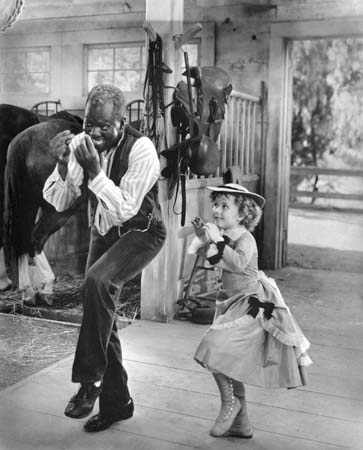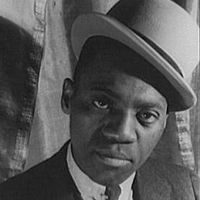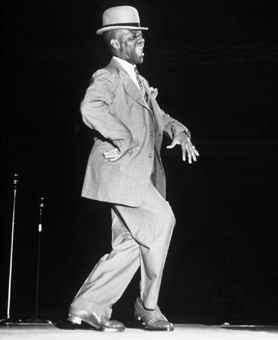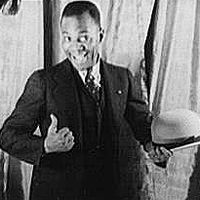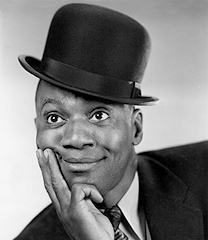Born in Richmond, Virginia on May
25, 1878, at the age of six he began dancing for a living, appearing as a "hoofer," or song-and-dance man, in local beer gardens.
Two years later, in Washington, DC
he toured with Mayme Remington's troupe. In 1891 (Ed: another source-1892), at the ripe age of 12, he joined a traveling company
in "The South Before the War", and in 1905 (Ed: another source 1902) worked with George Cooper as a vaudeville team. He gained
great success as a nightclub and musical comedy performer, and during the next 25 years became one of the toasts of Broadway.
Not until he was fifty did he dance for white audiences, having devoted his early career exclusively to appearances on the
black theater circuit.
According to Stearns'
Jazz Dance, Robinson was responsible
for getting tap dance "up on its toes." Ear;y tap was mostly 'buck and wing' a flat footed dance style. Robinson did his dancing on the balls of the
feet. Tap-dancing high on his toes and moving his upper body with understated grace, Robinson displayed a lightness and finesse
never seen before. He shunned the frantic style of his predecessors for a more elegant, precise form of tap.
Bojangles was also
known for vigorously protecting his steps. Also, his name 'Bojangles' (defined above as 'happy-go-lucky' or 'squabbler') was
listed in another source as being a vulgarization of the name of a Frenchman known in Robinson's hometown. Bojangles is also
known and responsible for teaching Sammy Davis Jr. tap dance.
Robinson died of a chronic heart condition at Columbia
Presbyterian Center in New York City in 1949. His body lay in state at an armory in Harlem; schools were closed,
thousands lined the streets waiting for a glimpse of his bier, and he was eulogized by politicians, black and white--perhaps
more lavishly than any other African American of his time. "To his own people", wrote Marshall and Jean Stearns, "Robinson
became a modern John Henry, who instead of driving steel, laid down iron taps." He was buried in the cemetery of the Evergreens
in New York City.
